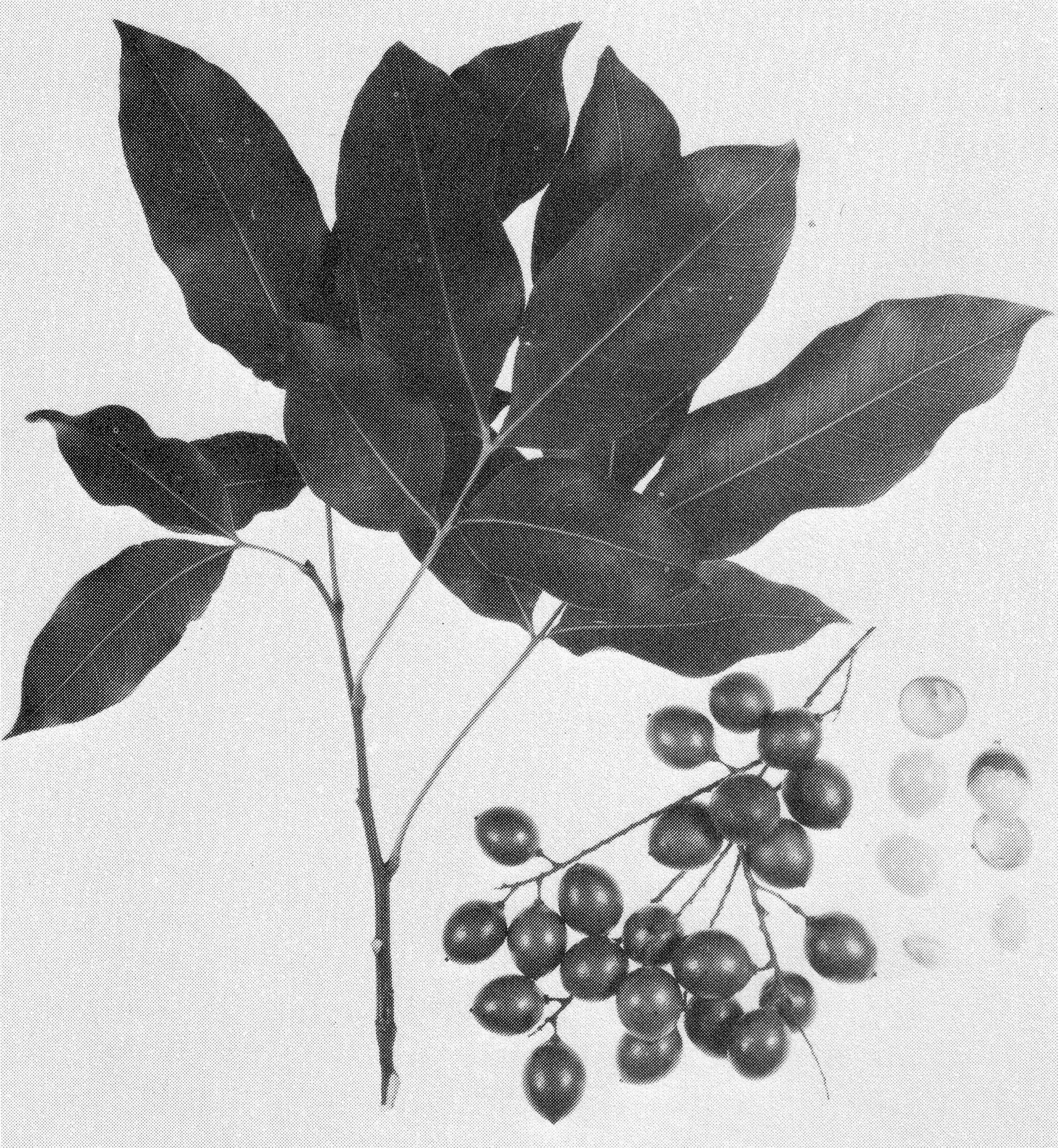|
References: Groff 1921, Ruehle et al. 1958, Popenoe 1939. Litchi chinensis Sonn. Common names: litchi, lychee (English); lichi (Spanish); litchi (French); li chih (China). Origin: China. Distribution: Cool tropical and warm subtropical areas of the world. Cultural requirements: Cool tropical or warm subtropical climate with well-distributed medium rain-fall, medium acid soil with high organic content. Not tolerant of drought. Does not fruit in hot lowland Tropics. Mature trees tolerant of light frost. Requirements exacting: not well adapted in many areas. Description: Tree to 12 m. Propagation by seed, layering, grafting. Fruit production in 8-12 years or more from seed, 3-4 years from vegetative propagation. Flowers March-April (Florida). Polygamous, usually self-fertile. Fruit matures in 60-90 days. Fruit spherical, conical, or ovoid, 2.5-4 cm in diameter, 15-30 g, in clusters of 5-30 or more; external color yellow, pink, or red; internal color whitish, translucent. Erratic in bearing. Utilization: Aril eaten fresh, dried, canned, preserved, in desserts. Flavor sweet, aromatic; universal appeal. Commercial production in China, Taiwan, South Africa, Australia, India, U.S.A. (Florida, Hawaii). Potential good for expanded commercial production if regularly bearing varieties can be found. Many varieties selected in Asia. Research on culture and variety improvement in Florida. References: Campbell and Maio 1968, Cobin 1954, Groff 1921, Leon 1968. Melicoccus bijugatus Jacq. (= Melicocca bijuga L.) Common names: Spanish lime, quenep, kenep (English), quenepa, mamon, mamoncillo, limoncillo (Spanish); kenépier, quenettier (French). Origin: West Indies, Central and South America. Distribution: Introduced widely into Tropics but common only in Caribbean region. Cultural requirements: Hot tropical lowlands with poor to good soils, low to high rainfall. Very resistant to drought; not tolerant of frost. |

Figure
28. Quenepa, a common and popular fruit in dry regions of the American Tropics.
Description: Tree to 20 m. Propagation by seed, layering, grafting. Fruit production in 7-10 years from seed, 4-5 years from vegetative propagation. Flowers in April (Florida). Dioecious; occasional hermaphroditic plants reported. Fruit matures in 90-150 days, depending on selection. Fruit globose, 2-3.5 cm in diameter, 10-25 g; external color green, internal yellow to orange. Some varieties selected in Florida and Puerto Rico. Utilization: Aril eaten fresh, in jellies, beverages. Seed roasted. Flavor of aril sweet to subacid (poor selections astringent); general appeal. Good for home garden and local marketing. Little potential for commercial production. References: Campbell 1976, Jackson 1967, Popenoe 1939. Nephelium eriopetalum Miq. Common names: lotong, rambutan hutan (Malaya). Origin: Southeast Asia. Distribution: Southeast Asia. Cultural requirements: Hot, wet tropical lowlands. Description: Large tree. Propagation by seed. Fruit 3-5 cm in diameter; pulp whitish. Utilization: Aril eaten fresh. Flavor sour. Little potential for wider cultivation. References: Burkill 1935, Molesworth Allen 1967. |